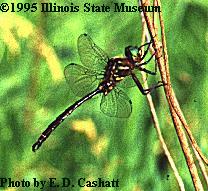 In the world I live in most people are very good at on or two things and oblivious as to how everything else works. If the mp3 player breaks we throw it away as with cell phones, disk drives, and refrigerators and to some extent cars. This throw-away society is good for business, but lends itself to thinking about our landscape and environment in the same cavalier fashion. If the ecosystem is broken, just get a new one. If you loose a piece throw the whole thing away and start over with something new.
In the world I live in most people are very good at on or two things and oblivious as to how everything else works. If the mp3 player breaks we throw it away as with cell phones, disk drives, and refrigerators and to some extent cars. This throw-away society is good for business, but lends itself to thinking about our landscape and environment in the same cavalier fashion. If the ecosystem is broken, just get a new one. If you loose a piece throw the whole thing away and start over with something new. As we fragment the environment and introduce new species, we are losing jewels of the realm and most of us will never know what once we had. Like canaries in a coal mine, dragonflies require a person to take the time to find, and wait and watch and learn. And these gems of nature are threatened so that we might build and live in a social model developed in a different time and age. We dream to have more than yesterday as tomorrow slips away.
A new poll suggests that for the first time in 25 years, we value economic growth over the environment. To paraphrase Franklin: “Those who would trade economic well being for ecosystem health will get neither.”
The habitats of a national treasure species in Japan - a critically endangered dragonfly Libellula angelina is threatened by the invasive species Myocastor coypus (coypu).

The Hine's Emerald dragonfly (Somatochlora hineana) is listed as endangered. Among the many threats, and there are many, encroachment of invasive species negatively impacts the species habitat. And finally, The Yellow Presba is a rare dragonfly from the fast flowing mountain rivers of southern Africa. Its conservation status is Vulnerable on The IUCN Red List of Threatened Species™ because of the spread of introduced trees throughout its native habitat.
The Yellow Presba (Syncordulia legator) is one of many southern African dragonflies currently under threat. Others have also suffered catastrophic declines because of human related problems like pollution, habitat loss to farming and the introduction of non-native trees. The spread of invasive species is now recognized as one of the greatest threats to the environment and our economic well-being. Trees such as the Australian Black Wattle (Acacia mearnsii), that were introduced commercially, encroach along riverbanks and shade out the sun, killing off the grasses that are home to dragonflies. The tragedy of losing these creatures is magnified to a global scale because many are endemic to southern Africa and can be found nowhere else on Earth.
No comments:
Post a Comment